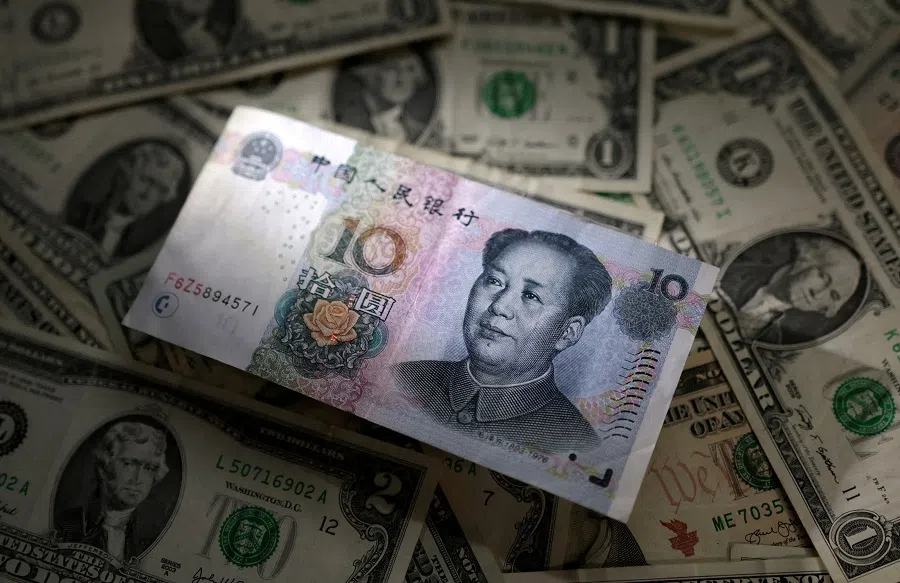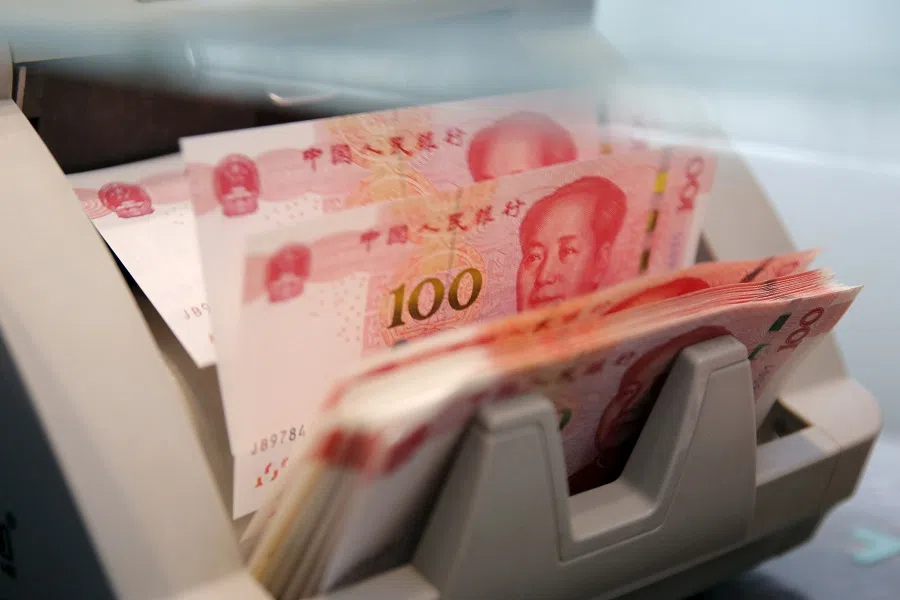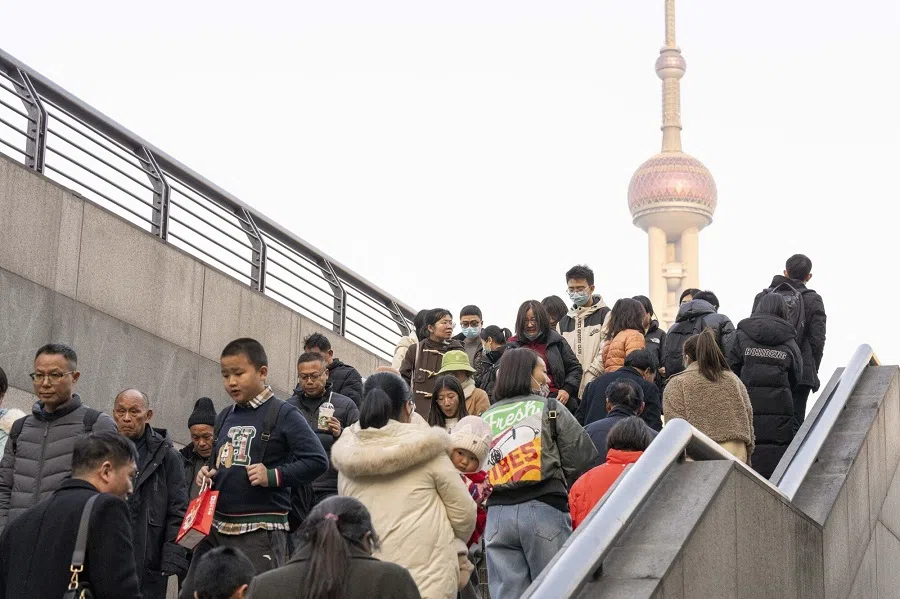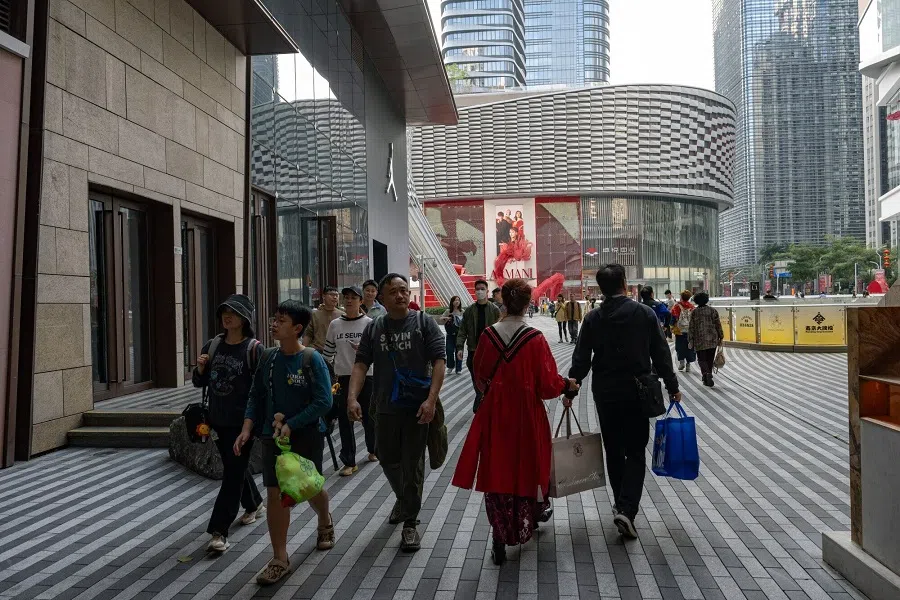China set for interest rate cuts to support economy
The People's Bank of China (PBOC) left a key interest rate unchanged on 15 January, leading the country's major lenders to keep their benchmark interest rates on hold a week later. The PBOC has been constrained in its ability to cut interest rates over concerns that such a move would drive more capital out of China in search of higher returns. Even so, analysts say the next window of opportunity for a rate cut is likely to be in March or in the next quarter.

(By Caixin journalists Fan Qianchan, Liu Ran, Wang Liwei, Wang Shiyu and Qing Na)
China's central bank is still widely expected to cut interest rates this quarter as part of government efforts to support economic growth despite its surprise move to leave borrowing costs unchanged in mid-January.
The People's Bank of China (PBOC) left a key interest rate unchanged on 15 January, leading the country's major lenders to keep their benchmark interest rates - the one-year and five-year-plus loan prime rates (LPRs) - on hold a week later.
Markets and analysts had widely anticipated the PBOC to reduce the interest rate on its one-year medium-term lending facility (MLF), a key policy rate, as part of a broader government strategy to bolster economic expansion, which is forecast to slow to under 5% this year amid sluggish investment, exports and consumer spending. The MLF has stood pat at 2.5% since August, when the rate was lowered from 2.65%.
The central bank also kept its seven-day reverse repo rate, a key short-term policy rate, unchanged at 1.8% for the fifth month.
"The PBOC spooked the market on 15 January when it skipped the widely expected policy rate cut," economists at Macquarie Group Ltd. led by Larry Hu wrote in a research note on 26 January. The central bank was possibly sending a message that it "doesn't think that cutting (the MLF) rate is helpful, maybe because the current issue is weak credit demand, not high funding costs," they added.

Even so, Hu said he continues to expect the PBOC to cut its policy rate by 15 basis points in the first quarter and again in the second quarter.
Expectations of a cut in lending rates rose at the end of 2023 after many Chinese banks lowered their deposit rates to ease pressure on their profit margins after lowering borrowing costs earlier in the year. The coordinated move on 22 December fuelled speculation that a further reduction in lending rates was imminent to encourage companies and individuals to take on more credit and ease the interest rate burden on existing borrowers.
Standing pat
A reduction in deposit rates has often presaged a cut in policy lending rates in the past, Wei He, a China economist at Gavekal Dragonomics, a Beijing-based research firm, wrote in a 15 January note.
But the PBOC unexpectedly stood pat, dashing hopes that lenders would follow on 22 January with a cut in their LPRs, the interest rates they charge their best customers and which act as a benchmark for other loans. The one-year LPR and its five-year-plus counterpart, a reference for mortgage lending rates, were held at 3.45% and 4.2% respectively, according to an official statement that day.
The PBOC has been constrained in its ability to cut interest rates over concerns that such a move would drive more capital out of China in search of higher returns.
Even so, many analysts are still expecting a cut in China's benchmark interest rates by the end of the first quarter despite the additional pressure this will put on banks' profit margins and the potential downward pressure on the RMB exchange rate.

A shift in the direction of the US Federal Reserve (Fed)'s monetary policy toward easing and diminishing expectations of further strength in the US dollar will give the PBOC more room to manoeuvre on monetary policy, central bank governor Pan Gongsheng told a news briefing on 24 January, fuelling speculation that it will move before the end of March.
The PBOC has been constrained in its ability to cut interest rates over concerns that such a move would drive more capital out of China in search of higher returns. Interest rates in the US started rising in March 2022 and increased many times through July 2023, making dollar-denominated assets more attractive. That contributed to a depreciation of the RMB against the dollar and a deepening slump in China's stock market.
The widening spread between Chinese and US interest rates as a result of the Fed rate rises made the PBOC more cautious about cutting borrowing costs, for fear of exacerbating capital outflows, analysts say.
The central bank's annual work conference held on 4 and 5 January underscored the need to "balance both domestic and external factors" when setting interest rates, indicating that monetary policy will continue to take into consideration the impact on the exchange rate and other overseas factors, analysts including Wen Bin, chief economist at China Minsheng Banking Corp. Ltd., wrote in a January report. Standing pat on interest rates might help stabilise the exchange rate amid growing expectations that the Fed will start cutting interest rates in the first half of this year, they said.

Capital outflows and the exchange rate aren't the only reasons for the central bank's reluctance to cut borrowing costs, however. Of equal, if not greater, importance, is the negative impact lower interest rates have on banks' profitability.
Record-low margins
Chinese banks earn a large portion of their profits from their net interest margin (NIM), which represents net interest income - the difference between interest earned on lending and interest paid on deposits and borrowed funds such as certificates of deposit - expressed as a percentage of their interest-earning assets.
When the central bank guides benchmark lending rates lower, banks' NIM suffers because the interest rates they can charge on their loans fall. To protect their margins and relieve the pressure on profitability, banks have cut their savings rates.
Many banks, especially smaller lenders that do not have the vast nationwide networks of the big banks, have been reluctant to lower deposit rates for fear savers will withdraw their money...
The average NIM of China's commercial banks fell from 2.07% in the first nine months of 2021 to 1.73% in the same period of 2023, data from the National Financial Regulatory Administration show. That's below the warning threshold of 1.8% set by a government-backed industry group to ensure banks can maintain reasonable profitability.
More than half of the 42 banks listed on the Chinese mainland markets saw their NIMs dip below the threshold in the first nine months of 2023, according to data compiled by financial information provider iFinD. Among the six largest state-owned commercial banks, Postal Savings Bank of China Co. Ltd., with a NIM of 2.05%, was the only one with a NIM above the 1.8% threshold.

Additional cuts in lending rates will compress NIMs even more and could further erode banks' profit margins. This will affect the health of their balance sheets and hinder their capacity to bolster the real economy as their retained profit will grow too slowly to enable them to boost lending.
"The PBOC chose to hold (the MLF rate) despite strong deflation pressure," analysts at Australia and New Zealand Banking Group Ltd. wrote in a 15 January note. "This likely reflects its concern about bank profitability. Although there is a policy for 'profit sharing' under the flagship strategy of 'common prosperity', banks' net interest margins have narrowed. Banking profitability affects financial stability."
Many banks, especially smaller lenders that do not have the vast nationwide networks of the big banks, have been reluctant to lower deposit rates for fear savers will withdraw their money, adding to pressure on their balance sheets as they would have to obtain more funding from other sources, including the interbank market through selling certificates of deposit.
If banks cannot obtain sufficient funds from their retained earnings to expand their lending, they do, in theory, have the option of selling more shares to raise money. However, it is difficult for a bank to sell new equity if its share price is trading below its book value per share, which means its price-to-book ratio is lower than 1.

The average price-to-book ratio of Chinese listed banks stood at 0.49 as of mid-March 2023, among the lowest in a decade, according to an analysis by Zheshang Securities Co. Ltd., indicating the market's lack of confidence in the banking sector. The ratio has now recovered and was 0.55 on 30 January, with Industrial and Commercial Bank of China Ltd.'s standing at 0.56 and that of China Merchants Bank Co. Ltd. at 0.87, according to data compiled by East Money Information Co. Ltd., a financial information provider.
As GDP growth remains sluggish, the property sector is still mired in crisis, and local governments are being told to clear up trillions of RMB of hidden debt in local government financing vehicles (LGFVs), policymakers continue to rely on banks to play a key role in resolving these problems and supporting the real economy. Banks are being urged to increase lending to property developers so they can complete unfinished housing projects and to participate in the restructuring of LGFV debts.
Stimulating demand
In 2020, as the Covid-19 pandemic sent economic activity plummeting, the government called on banks to sacrifice their profits to help support the economy.
But if the banking sector overly sacrifices profit margins, this could ultimately result in an even greater cost to society as a whole, as the authorities may need to fork out more money to put banks with weakened balance sheets back on a more sustainable operating footing, said Zhang Shuaishuai, a banking analyst at China International Capital Corp.
Some analysts say the PBOC needs to lower borrowing costs further to stimulate demand.
... lowering real interest rates is essential to spur private-sector investment and consumer spending. - Zhang Bin, a researcher at the Institute of World Economics and Politics at the Chinese Academy of Social Sciences

In the year to October 2023, the PBOC reduced interest rates on reverse repurchase agreements in open market operations in the interbank market by a total of 20 basis points and cut the MLF rate by 25 basis points, Pan, the central bank governor, said in a speech that month. Those adjustments led to a cumulative drop of 20 basis points in the one-year LPR and 10 basis points in the over-five-year LPR.
However, speaking to Caixin, Zhang Bin, a researcher at the Institute of World Economics and Politics at the Chinese Academy of Social Sciences, said prices declined by more than the cut in nominal interest rates, meaning real interest rates rose, which has greatly constrained the growth of aggregate demand.
Hence, lowering real interest rates is essential to spur private-sector investment and consumer spending, Zhang said, calling for a more proactive monetary policy in 2024 with stronger adjustments to policy interest rates.
China's consumer price index (CPI) fell 0.3% in December year-on-year, according to data released by the National Bureau of Statistics (NBS) on 12 January, the third consecutive month of decline. The producer price index (PPI), which reflects prices at the factory gate, also fell in December for the 15th straight month, NBS data show.

Historically, when the CPI and PPI have been negative and the official manufacturing PMI has been in contraction for several months, monetary easing follows shortly in the form of interest rate cuts or reductions in the reserve requirement ratio, analysts with Soochow Securities Co. Ltd. wrote in a 12 January report. With no rate cut by the PBOC in January, the next window of opportunity is likely to be in March after the Lunar New Year holiday, which this year falls in mid-February, they wrote.
However, other analysts, including Zhang Zhiwei, chief economist at Pinpoint Asset Management Ltd., say the PBOC will likely hold off until the second quarter. "Given the fading possibility of a Fed rate cut in March, with a higher likelihood in June, the PBOC may prefer to await the Fed's decision," Zhang told Caixin. "Therefore, a rate cut in the second quarter appears more plausible."
This article was first published by Caixin Global as "In Depth: China Set for Interest Rate Cuts to Support Economy". Caixin Global is one of the most respected sources for macroeconomic, financial and business news and information about China.

![[Big read] Paying for pleasure: Chinese women indulge in handsome male hosts](https://cassette.sphdigital.com.sg/image/thinkchina/c2cf352c4d2ed7e9531e3525a2bd965a52dc4e85ccc026bc16515baab02389ab)


![[Big read] How UOB’s Wee Ee Cheong masters the long game](https://cassette.sphdigital.com.sg/image/thinkchina/1da0b19a41e4358790304b9f3e83f9596de84096a490ca05b36f58134ae9e8f1)
